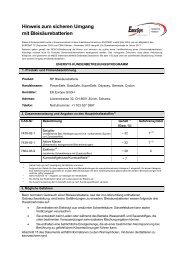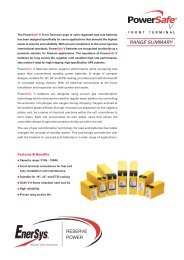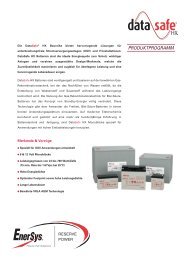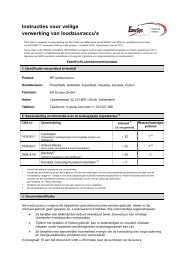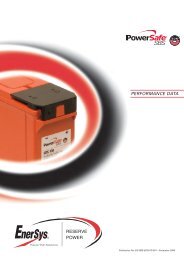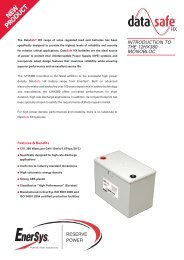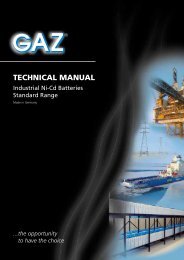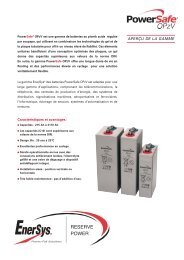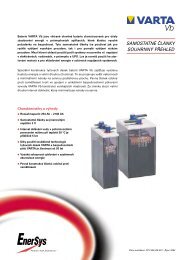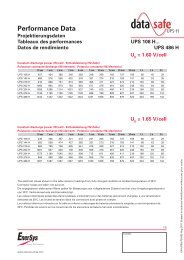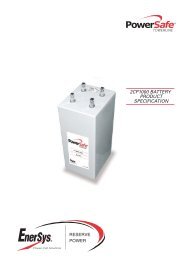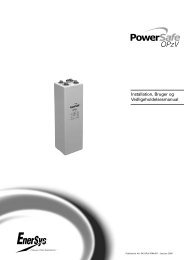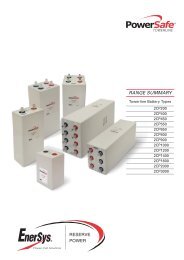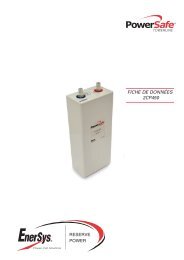En-Opzv-Pg-002 - Enersys - EMEA
En-Opzv-Pg-002 - Enersys - EMEA
En-Opzv-Pg-002 - Enersys - EMEA
Create successful ePaper yourself
Turn your PDF publications into a flip-book with our unique Google optimized e-Paper software.
2 - Battery cycling<br />
Definition<br />
Battery cycling implies use in a regular cycle, with<br />
full discharge followed by re-charging on a daily or<br />
weekly basis for example.<br />
The number of such cycles which can be obtained<br />
is typically over 1200, in conformity with the<br />
IEC896-2 (1995).<br />
3 - Effect of temperature<br />
on battery capacity<br />
The temperature has an effect on the battery capacity<br />
available. The following table gives the relevant<br />
details for a temperature of 20°C.<br />
Discharge time<br />
(hours)<br />
1<br />
3<br />
5<br />
10<br />
12 to 24<br />
4 - Temperature range<br />
The ideal ambient temperature for PowerSafe OPzV<br />
batteries is 20°C ± 5°C (best performance and service<br />
life) The operating temperature shall be in the range of<br />
10 and 35°C<br />
The maximum and minimum permissible temperature<br />
is 45°C and -10°C.<br />
Important note : For all applications which use the<br />
PowerSafe ® OPzV type battery in a cycling system,<br />
it is recommended that the technical department of<br />
<strong>En</strong>erSys ® should be contacted so that the technical<br />
parameters can be specified for the precise cycling<br />
programme in question.<br />
Correction factor for capacity calculation according to temperature<br />
(the reference temperature is 20°C)<br />
-10°C 0°C 10°C 20°C 30°C 40°C<br />
0.37 0.61 0.82 1.00 1.05 1.07<br />
0.51 0.70 0.85 1.00 1.05 1.06<br />
0.55 0.73 0.87 1.00 1.04 1.06<br />
0.58 0.75 0.88 1.00 1.04 1.05<br />
0.60 0.78 0.91 1.00 1.03 1.05<br />
5 - Effect of temperature on life<br />
Operation of valve regulated batteries at<br />
temperatures higher than 20°C will reduce life<br />
expectancy. Higher temperature increases the speed<br />
of chemical reactions resulting in reduction of service<br />
life. A temperature increase of 10°C decreases the<br />
service life to half (law of Arrhenius)<br />
8 www.enersys-emea.com<br />
Publication No: EN-OPzV-PG-<strong>002</strong> - January 2011



